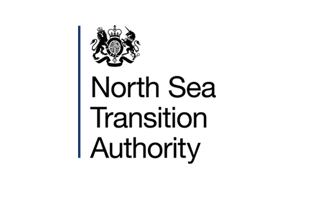
The Field Development Plan (FDP) is the support document for the NSTA’s development and production authorisations and should provide a brief description of the technical information on which the development is based.
Here is a downloadable copy of the NSTA Guidance on the Onshore Regulatory Regime. This guidance, which consolidates previously available guidance, sets out how the NSTA will normally consider stated matters and is not a substitute for any regulation or law and is not legal advice.
Development and Production
The Field Development Plan (FDP) is the support document for the NSTA’s development and production authorisations and should provide a brief description of the technical information on which the development is based.
As licensees are jointly and severally responsible for the FDP, it must represent a single view of all the licensees. The licence operator is usually responsible for producing the FDP and to ensure that all necessary consents and authorisations are obtained. It is usual for the NSTA to conduct discussions with the operator as the representative of all the licensees.
Licensees must meet certain financial criteria to demonstrate that they have the financial capacity to conduct the develop the field and fund their liabilities. (see financial guidance)
The FDP should provide a summary of the operator’s understanding of the field, although more information must be provided if required by the NSTA. Here is a suggested structure for the document. The NSTA encourages operators to engage with the NSTA early to discuss content, drafting and development options before submitting an FDP, this will help make the process more efficient.
The NSTA is committed to making information publicly available as soon as is reasonable but recognises that FDPs typically contain commercially sensitive information. The NSTA will publish FDPs six years after they have been approved but will consider representations to extend the period of confidentiality.
In addition, the NSTA will require:
- a board letter confirming scope of insurance or availability of necessary funds for any required remedial work;
- a board letter confirming availability of planning permission and absence of any on-going planning disputes; and
- a board letter from each licensee confirming that they support the development plan and have the necessary funds available.
This “board letter” should also include a statement confirming that the NSTA’s licensee residence requirements have been met.
The focus of the NSTA, once a development has been authorised, will be to ensure that the Field Development Plan (FDP) is being followed or modified appropriately as the understanding of the field develops.
If an operator wishes to deviate from or update the agreed Management Plan authorised by the NSTA in an FDP, they are required to submit an Field Development Plan Addendum (FDPA). The process for agreeing an FDPA is similar to that for an FDP and here is a suggested structure for the document. An FDPA will also be required when an extension of long term production consent is requested, and should be uploaded to the PORTAL consent application and a copy emailed to the onshore team (onshore@nstauthority.co.uk).
The NSTA will publish FDPAs six years after they have been approved but will consider to extend the period of confidentiality
The development will be authorised once the NSTA is satisfied that the Field Development Plan (FDP) meets its requirements.
The NSTA will require:
- a board letter confirming scope of insurance or availability of necessary funds for any required remedial work;
- a board letter confirming availability of planning permission and absence of any on-going planning disputes
The NSTA's approval will cover both the construction of the facilities and other infrastructure, and the production of hydrocarbons from the field. Subject to the terms of the licence, agreement will usually be given for production over a period that can be reasonably forecast with appropriate tolerances in the levels to be produced. A Development Area may be agreed for licences with The Petroleum Licensing (Exploration and Production) (Landward Areas) Regulations 2014 model clauses. Conditions may be imposed to give the NSTA powers to require a review if performance falls outside these tolerances, or if the field is found to differ from the initial perception to such an extent that there is a risk of a loss of significant economic reserves.
If production consent is issued for a duration that is less than the anticipated life of the field it is the responsibility of the operator to apply for renewed approval to allow production to continue, and an updated Field Development Plan Addendum (FDPA) may be required at that time.
If, either at the time of the authorisation of an FDP or during the period of production, it appears that production is likely to continue beyond the term of the licence(s) involved, it is the responsibility of the operator to apply for an extension to the licence, and this extension will, among other considerations, be subject to the continuing satisfactory performance of obligations under the licence. An extension will only be considered on the basis of projected production in an FDPA and commercial viability beyond the current term.
How to Submit an Application
The NSTA's consent will be given in the form of production consent through the UK Energy Portal and the FDP needs to be uploaded in the application. Online applications can only be applied for using the Portal so all applicants should ensure that an appropriate individual within that company has user access rights. Separate applications for production, flare and vent consents will need to be completed as appropriate.
Users who do not have a UK Energy Portal account should send an email to ukop@nstauthority.co.uk requesting an account and including the reason: 'to gain access to the UK Oil Portal Field Consents system'. The following information about the user should be supplied: Forename, Surname, Organisation Name (Employer), Job Title, Work Telephone Number & Email Address.
Users who already have a UK Energy Portal account should check that the details held about them on the Portal are correct.
Operatorship and Licensee Requirements
Information about regulatory requirements for operator competency and financial viability and capacity requirements are found under the Licensing Regime, and these will be considered at various stages of the regulatory process.
Field Returns
Monthly Petroleum Production Reporting System (PPRS) returns are required from a producing field. Annual Field Returns are currently not required onshore, although the NSTA may introduce this requirement in future.
Licensees are requested to promptly contact the onshore team (onshore@nstauthority.co.uk) if production does not fall within the consented range or the geotechnical understanding or economic recoverable resource potential changes significantly. A licensee must apply for variation if the annual total is projected to exceed the consented volume.
Flaring and Venting of Gas
The NSTA expects that onshore operators will not exceed flare or vent consent levels.
Any request for increased flaring and venting consent should be considered as a last resort. The NSTA will take a robust approach when considering any increases and operator justifications will be heavily scrutinised. NSTA consideration may include the recent events and/or the long-term history of operations and stewardship.
Operators must inform the NSTA as soon as it becomes clear that there is a risk of flaring or venting consent breach; this includes notifying the NSTA of new risks of, or unexpected increases in, flaring or venting. Requests for consent variations must be submitted in sufficient time for the NSTA to consider the relevant details and respond accordingly. Failure to notify the NSTA in good time of a likely breach of consent may be taken as evidence of poor management of operations and the NSTA may take action.
Unit Development
Where a Field Development Plan (FDP) is proposed for a field which extends into the area covered by a neighbouring licence operated by different company, the NSTA needs to be satisfied that the ultimate economic recovery of petroleum is maximised and that unnecessary competitive drilling is avoided. The most efficient way to satisfy these requirements and therefore avoid any possible delay in the authorisation process, is for licensees to discuss with the neighbouring licensees at an early stage and propose an agreed FDP.
In cases where the licensees have not reached an agreement, the NSTA has powers to require a unitisation between licensees. However, licensees should be aware that the NSTA will not necessarily refuse to authorise development to a particular group of licensees who have not concluded an agreement with the licensees of an adjacent block on the basis that they have not concluded such an agreement. The NSTA does not consider that powers to require unitisation extend to issues of fairness and equity between groups of licensees. The NSTA's position is that proprietary rights do not exist in unextracted hydrocarbons and ownership of hydrocarbons arises only once they have been extracted under appropriate regulatory consent. The NSTA's acceptance or rejection of any FDP will, therefore, be on the basis of whether it is the optimum development in the light of its objectives If, in any intended development, there is a likelihood of claims or disagreement between adjacent licence groups related to the field's extent, the NSTA should be consulted at an early stage.
Field Determination
So that the licensees understand what constitutes a field for both development and tax purposes, the NSTA will issue a proposed Field Determination at an early stage in the FDP authorisation process, utilising the geological information that is available to it at that time.
For Abandoned Mine Methane fields, this will normally be a 1km square around the vent or mines gas well, rather than the workings expected to be drained by the development because of the uncertainty and complexity of many abandoned workings.
For Coalbed Methane (CBM) fields the area will usually be defined by the areal limits of the coal seams to accessed by the proposed development. In the case of a phased project, this might mean that the field will need to be redefined as further blocks of coal are drilled. Fields draining from shale formations will also usually be defined by the extent of the area likely to be accessed by the planned development and if there are decision points to expand the development later in a phased project, the field determination will change incrementally as more information is known. Where a proposed field development seeks to develop only a subset of stacked prospective horizons, the field determination may include a depth cut-off.
Wider Regulatory Regime
There are wider controls on onshore oil and gas development and production which do not come within the jurisdiction of the NSTA. The Environment Agency and the relevant local mineral planning authorities implement environmental and operational controls, the local mineral planning authority is responsible for site reclamation, and the Health and Safety Executive regulates health and safety. Where coal is present, an access agreement must be obtained from The Coal Authority before any activity is conducted. An oil and gas development must have the relevant authorisations from each of these relevant regulators for both construction and production operations.
The NSTA expects to be made aware in advance of when production is anticipated to cease. Please contact the onshore team (onshore@nstauthority.co.uk) to arrange a technical review. A cessation of production (COP) report is required. The amount of detail to be included in the report will depend on whether options to extend field life have been appropriately covered in previous field reports and should cover:
- definition of economic limit and determination of cut-off rates and timing;
- possible options for extending field life;
- cash flow over the period up to this economic limit and approximately 2 years beyond;
- the costs and any revenues associated with cessation of production itself (capital and operating expenditures and any residual value of field assets);
- the form and costs of abandonment if these affect the timing of the economic limit;
- production and injection profiles together with projections through to economic limit and approximately 2 years beyond;
- details of any remaining licence obligations;
- appropriate reservoir maps indicating the estimated location and distribution of remaining technically recoverable oil/gas that will be undrained at the time of cessation of production. In addition, some conception of likely changes in such distributions over time should be given for completeness of the record; and
- confirmation that all abandonment requirements in the relevant planning consents will be met and details of what is involved.
It is important that sufficient information is retained after cessation of production to enable other interested potential operators to take a reasonably informed view about the potential for field redevelopment. Redevelopment may become feasible if, for example, new technology allows a significantly improved recovery factor. For this reason, the COP report is normally published within six months of the cessation of production.
The relevant local mineral planning authorities, Environment Agency , The Coal Authority and Health and Safety Executive (also have specific regulatory requirements which must be met).
On 9 June 2017, the NSTA launched its refreshed Petroleum Production Reporting System (PPRS) on the Energy Portal, allowing operators to report their monthly flow rates for gas, oil, condensate, flare, venting, gas and water injection data with improved functionality and capability and aid and inform the NSTA’s Asset Stewardship model.
Portal Support for PPRS will be offered through the usual UKOPs helpdesk (ukop@nstauthority.co.uk, Tel 0300 067 1682).


